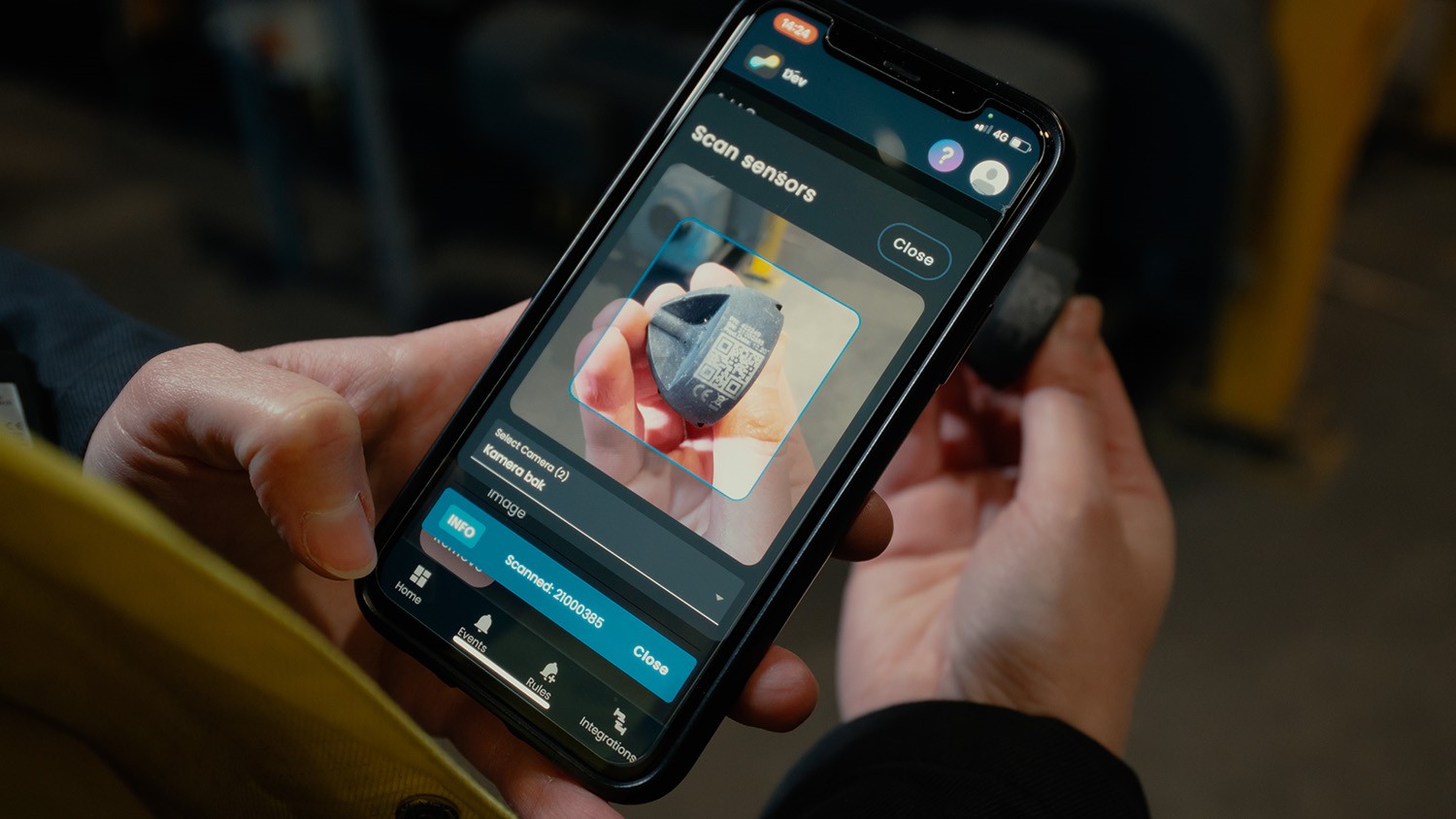Aluminium industry challenges solved by wireless sensors
Cutting-edge sensor solutions transform the aluminium industry, improving safety, efficiency, and productivity through accurate monitoring and condition-based maintenance.

Despite its pivotal role in modern manufacturing, the aluminium industry grapples with significant challenges. These include aligning with global environmental standards, managing high energy costs, and contending with dwindling raw material reserves. As the worldwide demand for aluminium rises, tackling these issues becomes increasingly critical.
A primary concern in the industry is worker safety, given the risks associated with high-temperature environments, electrical hazards, machinery, and exposure to harmful gasses. The extreme heat, dust, and magnetic fields in aluminium production necessitate robust sensor solutions that endure these harsh environments while ensuring safety and efficiency.
Traditional manual measurement methods are time-consuming and pose significant health and safety risks. In addition, they can lead to inefficiencies that negatively impact the environment. Wireless and automated sensor solutions offer a promising alternative, reducing the need for manual interventions while enhancing operational efficiency and safety.
To wire or not to wire, that is the question
Equipment durability and functionality are vital in the challenging conditions of aluminium production. Sensors and machinery must be resilient and efficient to ensure smooth, uninterrupted operations. Wired sensors, though commonly used, have limitations due to short circuit risks, high installation costs, and complex implementation procedures. Wireless sensor solutions offer a safer, more flexible, and cost-effective alternative.
Integrating sensor data into proprietary software systems is crucial in today's data-driven world. With open API capabilities, El-Watch's Neuron Solutions allows seamless sensor data integration into existing systems. This feature empowers the aluminium industry to utilize real-time analysis, predictive maintenance, and informed decision-making, addressing the challenges outlined above.
To elaborate on the aluminium industry's specific challenges, we'll dive further into two specific use cases where wireless sensors enable safer and more efficient methods for managing challenging operations: cathode bar monitoring and condition-based maintenance.
Use case 1: Monitoring cathode collector bars in aluminium electrolysis cells
Aluminium electrolysis, a key process in aluminium production, involves transforming aluminium oxide into pure metal in specialized cells. These cells contain carbon-based anodes and cathodes, with metal bars (anode rods and cathode collector bars) providing electrical connections. Monitoring these components, especially collector bars, is vital for efficient and safe operations.
Challenge: Traditional methods of monitoring collector bars, like manual measurements and metal sample analysis, are hazardous and inefficient. Manual measurements are risky due to high temperatures, cramped spaces, and high currents, and they don't provide real-time data. This can lead to delayed issue detection and production losses.
Solution: El-Watch's innovative solution employs wireless sensor technology for continuous and precise collector bar monitoring. These robust sensors are designed to withstand extreme conditions and provide real-time visibility into temperature variations and current distribution. This allows for early detection of changes and potential cathode degradation.
Benefits: Implementing this sensor solution offers multiple advantages, including continuous temperature and current measurement, detailed data storage, and operator alerts for deviations. This reduces time spent in hazardous areas and extends the lifespan of cathodes.
Use case 2: Condition-based maintenance of assets
Assets like motors, pumps, and fans require regular upkeep in industrial settings. Condition-based maintenance, facilitated by IoT sensors, enables maintenance schedules to be adjusted based on the asset's state, leading to more efficient upkeep and reduced energy consumption.
Challenges: Traditional maintenance schedules are often based on fixed intervals, which may not align with an asset's actual condition. This can result in premature or delayed maintenance, reducing efficiency. Moreover, data provided by asset vendors or automation systems may be insufficient for accurate maintenance decisions.
Solution: El-Watch's solution utilizes vibration, temperature, and current sensors to accurately assess an asset's maintenance needs. Continuous monitoring establishes a baseline of normal asset behaviour, making it easier to detect irregularities.
Benefits: The solution includes sensors like the Neuron Vibration sensor and the Neuron
Ampere sensor for monitoring vibrations, surface temperature, and current consumption. This approach enhances maintenance efficiency, reduces unnecessary maintenance work, and increases overall productivity. Data from these sensors can be integrated into various software platforms for further analysis.
Hydro saves millions from El-Watch monitoring of cathode bars
Hydro Karmøy is one of the largest aluminium plants in Europe, and they stand a lot to gain from implementing predictive maintenance. Real-time monitoring of cathode collector bar temperatures enables early detection of issues, allowing for timely interventions to prevent meltdowns, reduce downtime, and avoid significant smelter damage.
“The harsh environment in a production involving high temperatures and difficult access to measuring points has made monitoring difficult. We are now able to envision the possibility of this through our excellent partnership with El-Watch.” (Jan Frode Høines, Technical Supervisor & Process Engineer at Hydro Karmøy)
The implementation of sensor monitoring will diminish the necessity for personnel to enter hazardous areas for manual inspections and measurements. This approach is crucial for health, safety, and environmental (HSE) considerations.
“The roll-out entails a significant improvement in our production, in terms of safety risks, but also through the extended service life of electrolysis cells and reduced costs in the event of a meltdown.” (Jan Frode Høines, Technical Supervisor & Process Engineer at Hydro Karmøy)
Hydro Karmøy is the first company to deploy this kind of wireless monitoring on such a large scale. “We are pleased that several smelting works both nationally and internationally have now started the process of monitoring cathode ingots using our sensors. The scaling potential is enormous, and we are confident that the solution will give our customers a high return on investment and value in use from day one,” says El-Watch Sales Director Tom Eskil Grande.
Digitalisation's transformative impact on the aluminium industry
Digitalisation is a critical driver of transformation in the aluminium industry and is rapidly proving to be an essential aspect of modern manufacturing. This shift towards a digital-first approach, fueled by new technologies, digital tools, and the Internet of Things (IoT), is enabling companies to optimise processes, reduce costs, and enhance product quality lever never before.
Benefits of digitalisation and IoT in the aluminium industry:
Enhanced productivity: Sensor solutions enable real-time monitoring and predictive maintenance, which is instrumental in optimising equipment performance. This approach significantly reduces downtime and boosts output, streamlining the entire production process.
Improved quality control: The ability to monitor processes in real time ensures that the quality of aluminium meets the highest standards. This constant vigilance leads to superior product quality, maintaining the industry's competitive edge.
Sustainability: Digital solutions, when combined with sensor technology, offer improved resource management. This integration leads to reduced waste and a smaller carbon footprint, aligning the industry with global environmental sustainability goals.
Safety enhancements: Replacing manual measurements with automated sensors and online data collection significantly reduces the risks to operators, especially in hazardous areas. This shift ensures compliance with safety standards and contributes to a healthier work environment.
Streamlining operations: IoT-connected sensors enable automated and optimised processes, leading to more efficient operations.
Predictive maintenance: IoT technology facilitates predicting maintenance needs, reducing downtime, and prolonging equipment life.
Anomaly detection: Using sensor data to detect issues in machinery or processes early on can help prevent costly breakdowns and production halts.
Fostering innovation: The abundance of data available through digitalisation and IoT paves the way for innovation, allowing companies to explore new production methods and applications for aluminium.
Key sensor applications in the aluminium industry
The aluminium industry's adoption of sensor solutions, particularly wireless ones, is critical in addressing many more challenges than the highlighted use cases above. These sensors provide overall improved precision, safety, and efficiency for many of the industry's intricate processes and utilizations of heavy machinery. Here are seven key sensor applications:
Cathode collector bar monitoring: Sensors offer early warnings for cathode wear, preventing metal runout and ensuring timely interventions.
Rotating machinery oversight: Continuous monitoring of machinery like fans and pumps replaces intermittent manual checks, enhancing maintenance and reducing health, safety, and environmental risks.
Busbar monitoring: To prevent production stoppages, sensors track temperature trends, offering early warnings to avoid catastrophic failures.
Shunt monitoring during cell disconnection: Wireless sensors ensure the safety of operations by identifying electrified cells in real time.
Hour meter automation: By replacing manual readings, sensors reduce errors and inefficiencies in data collection, leading to more accurate decision-making.
Ventilation system monitoring: Sensors improve health and safety by ensuring optimal ventilation in crucial areas.
Cabinet safety: Monitoring electrical cabinets ensures they remain dust-free and functional, reducing malfunctions.
El-Watch's Neuron solutions play a pivotal role in each of these areas, offering continuous, accurate monitoring and fostering a safer, more efficient production environment. As the industry progresses, these sensor solutions bridge the gap between traditional methods and a future-oriented approach, seamlessly integrating into the next chapter of enhanced production and safety in the aluminium industry.
Embracing a new era in the aluminium industry with wireless sensors
As the aluminium industry steps into the future, it is increasingly evident that wireless sensor solutions are pivotal in this journey.
El-Watch's Neuron sensors, tailored for the aluminium industry's specific needs, excel in efficiency and durability, even under extreme conditions. They play a crucial role in enhancing safety by minimizing risks associated with molten aluminium, electrical hazards, machinery-related injuries, and exposure to harmful gasses.
The flexibility and ease of installation of these wireless sensors, combined with their ability to seamlessly integrate into existing systems through API capabilities, mark a significant advancement in operational efficiency. The benefits from real-time data analysis and decision-making lead to more streamlined, safe, and environmentally responsible operations.
For the stakeholders in the aluminium industry, the future looks bright, with wireless sensor solutions opening doors to new levels of growth and improvement. The shift towards a digitally empowered, sensor-driven industry heralds a future where progress and responsibility go hand in hand.
This news is also available on our App 'AlCircle News' Android | iOS














.png/0/0)







